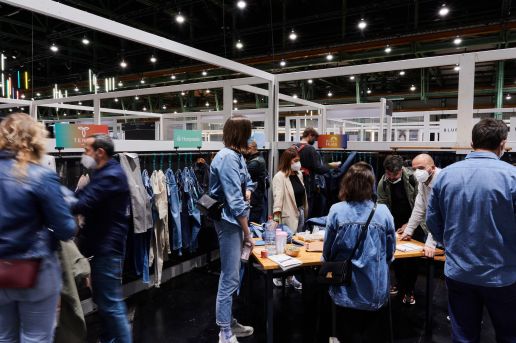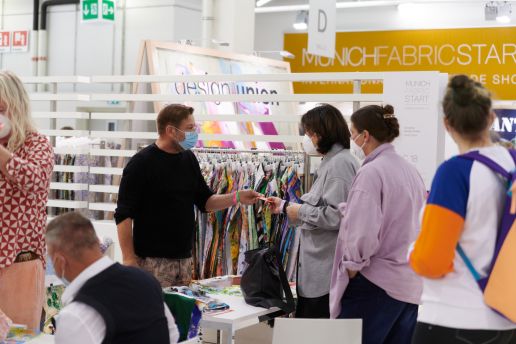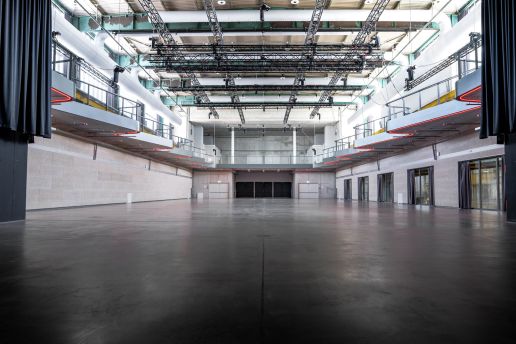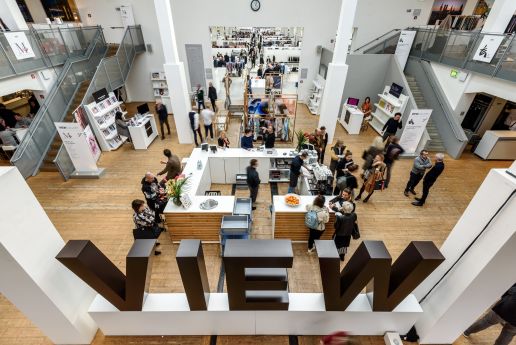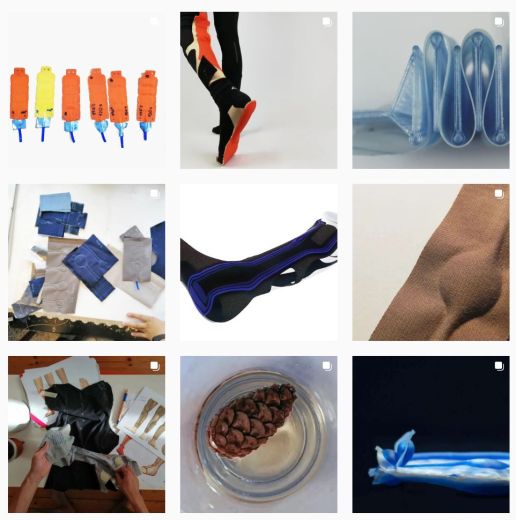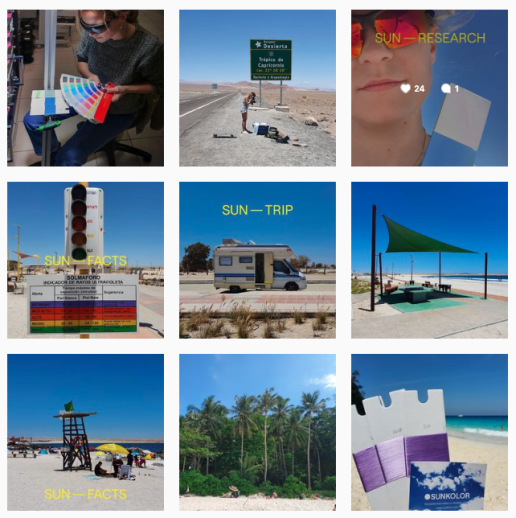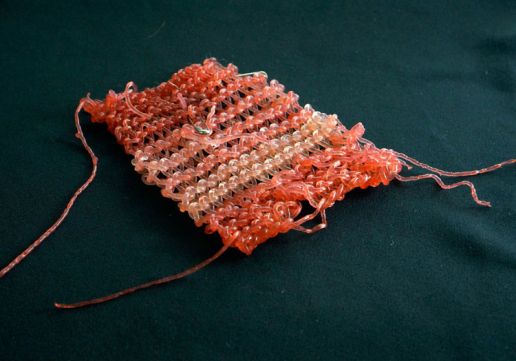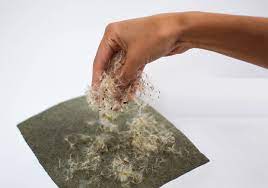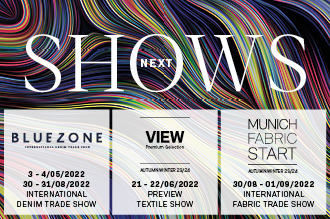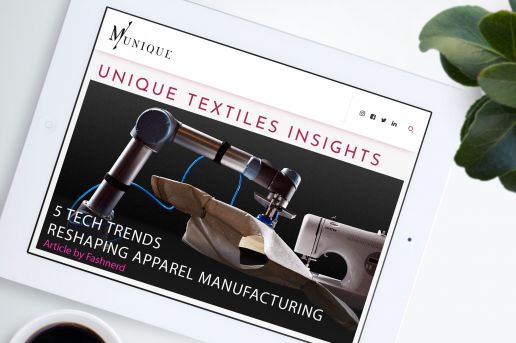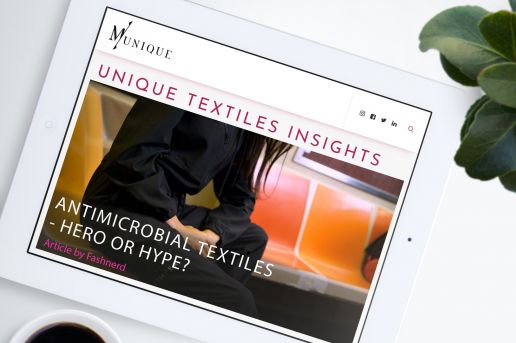Keyhouse
The twenties are taking shape
Trend analyst Carl Tillessen not only observes; he anticipates. As a member of the management and chief analyst of the Deutsches Modeinstitut, he knows the textile and fashion to the smallest detail. Here he reveals the upheavals and trend changes that are in store for us.
How can you foresee which trends will develop?
What role does culture play, do current events play?
As part of an association of the most important trend institutions in the world, DMI always sets the key directions for a season two and a half years in advance. To think that far ahead, it is not enough to sell people something as a trend that is already visible in Milan, Paris and New York. You have to recognise trends before they become visible. Let me explain it this way: A bad trend analyst and a good trend analyst go to a bar. They see that the guests are nibbling salty biscuits. The bad trend analyst says: ‘People are eating savoury biscuits. We need savoury biscuits.’ The good trend analyst says, ‘People will get thirsty soon. We need drinks.’
Are people consuming more again right now? If so, why? Does compensation (e.g. for the time lost during the pandemic years) play a role?
Yes and no: No, little is being consumed at the moment. Yes, compensation plays a big role. Before the pandemic, people had increasingly spent money on experiences and less on things. Then the pandemic came and many experiences were not possible or not allowed. So people spent more money on things again. Accordingly, retail sales in the last two years have been much higher than before Corona. Now people are trying to make up in one summer for everything that was cancelled in the last two summers – trips, weddings, festivals, concerts … That costs a lot of money. And this money is missing from the shopping budget.

Carl Tillessen
In view of the very contradictory developments – sustainability and minimalism on the one hand, hedonism and expression through consumption on the other – what forecast would you make for the next few years?
The pandemic has polarised our society in this respect as well. While the majority of people simply wanted their old lives back and to continue exactly where they left off, it became apparent after only a few weeks that the powerful cultural elite took the sitting-at-home-and-cleaning-out-the-closet as an opportunity to rethink their overconsumption and to make a resolution to live more frugally after the pandemic. This idea of consumerism is now in the world, and it is only a matter of time before it becomes mainstream.
What are the challenges and opportunities ahead for the industry?
So far, fashion companies have been able to answer the demand for more sustainability with a more sustainable quality of their products. They replaced cotton with organic cotton, for example, and customers simply bought the same thing in green. But now customers are additionally questioning the quantities. It is less and less about what they want to buy and more about how much they want to buy. Adapting to this new situation is currently the big challenge and opportunity for the industry.
Do your trend analyses differ for the different price segments?
Yes, also. But due to people’s hybrid consumption, this is becoming less and less important. Luxury fashion is increasingly being bought by people who can’t actually afford it, and cheap fashion is also being bought by people who don’t actually need it. In this respect, buying decisions are determined much less by how much someone earns than by what style world they want to live in.
What long-term changes do you see in the next few years?
We are actually just at the end of a macro trend and the beginning of a new one. It’s about more than just a fashion variant. It’s about a new style, a new music direction, a new attitude to life. The twenties are taking shape. But more on that elsewhere.
Get informed & inspired at the MUNICH FABRIC START at DMI:
Get informed & inspired at the MUNICH FABRIC START at DMI:
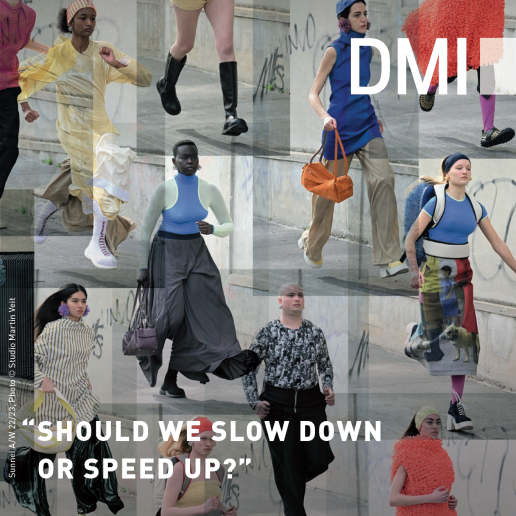
TREND LECTURE: Should we slow down or speed up?
Wednesday, 31 August 2022 from 4:00 – 5:00 pm
in room K1 in front of Hall 1, MOC
TREND BRIEFING:
Ask our analysts in a personal conversation specifically about impulses, colours and materials that are relevant for your products,
your target group and your brand essence.
Tuesday, 30 August from 9:30 am to 6:30 pm
Wednesday, 31 August from 9:30 am to 3:00 pm
Discover further industry-disrupting innovations at our upcoming shows:
The Material Revolution - Who is leading the charge?
In the past five years, groundbreaking science has been changing the clothing industry one experiment at a time. With a ravenous appetite for new fabrics, some great candidates have been castor bean-derived nylons, mushroom leather, and synthetic spider silks. Designed to correct some of the textile industry’s wrongs, new materials have been enticing the attention of some of the most prominent players in the fashion industry, which is an excellent thing.
Introducing Cutting Edge Atelier
As we enter a new material age, there has been an influx of fabric alternatives being researched and explored. So even though it may all seem pretty experimental right now, here are five companies making many of us believe that new materials will become the norm over traditional ones.
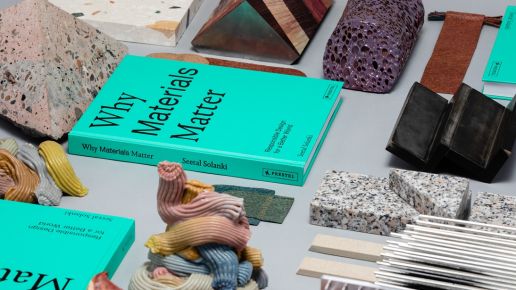
Picture credit:
Circular Systems
AlgiKnit
Is biology the future of fashion? Well, AlgiKnit seems to think so. The biomaterials company has been developing biomaterials that can play a vital role in the future of sustainable manufacturing.
By addressing the ecological damage caused by the fashion industry, AlgiKnit is making an impact by operating in a closed-loop product lifecycle that will bring sustainable bio-based textile alternatives to the footwear and apparel industries.
The biomaterials startup focuses on transforming the apparel ecosystem with rapidly renewable bio-based textiles. AlgiKnit has found a way of utilising materials with a significantly lower environmental footprint than conventional textiles. One of these materials is Kelp. Considered to be one of the fastest-growing organisms on earth – up to 10 times faster than bamboo. “Kelp is grown in aquatic farms around the world in coastal communities, often by fishermen and women, providing income during the fishing off-season,” states their site.
One of the benefits of Kelp, according to Fashion United is that it improves the environment by absorbing nutrients from agricultural and sewer run-off that can alter coastal settings. This recaptures nutrients for the next generation of biomaterials. Also, Algiknit’s biopolymer is entirely customisable.
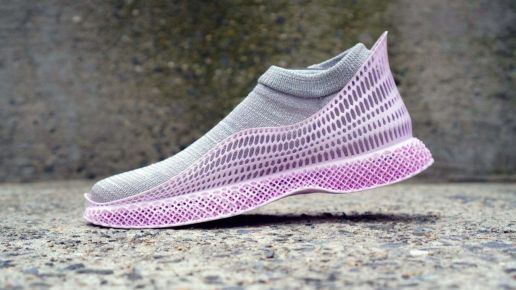
Picture credit: Algiknit

Picture credit: Algiknit
MyCoWorks
Founded by Philip Ross, Sophia Wang and Eddie Pavlu, the California startup MyCoWorks comprises a team of creative engineers, designers, and scientists. Their distinctive disciplines gave birth to a rapidly renewable natural resource called mycelium.
According to Insider.com, Mycelia are thread-like masses of fungi that grow underground. They run through almost every square inch of earth, delivering nutrients and allowing plants to “talk” to each other. MyCoWorks has innovatively used fungi to create a textile that performs like leather. On the mushroom-like material, Wang admitted to it being “a new thing in the world.”
So what does mycelium bring to the table? Well, MyCoWorks have presented mycelium as the solution to replace the resource-intensive product, leather. Relying on nature’s best tools, they have created a new kind of leather that can multiply from mycelium using a carbon-negative process. In addition, their custom-engineered material is sustainable, versatile, and animal-free. On MyCoWorks new leather, Dr Amanda Parkes, Chief Technology and Research at Manufacture NY, shared, “I believe we can solve all the world’s problems with mycelium biology”.

Picture credit: MyCoWorks
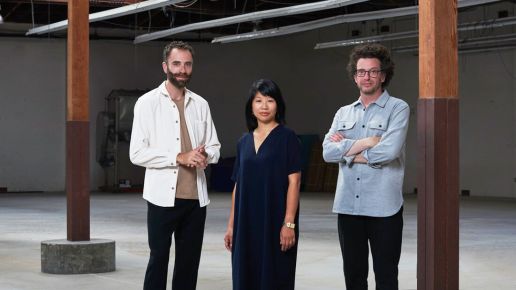
Picture credit: MyCoWorks

Picture credit: MyCoWorks
Desserto
Cactus vegan leather is nothing new. The material first came to our attention back in 2019. We wrote about how the two entrepreneurs, Adrián López Velarde and Marte Cázarez, developed and showcased their vegan leather material at the International Leather Fair Lineapelle 2019.
Made with cactus, the alternative to animal leather was heralded as a high resistance vegan cactus leather that would appeal to the fashion, interior and car industries.
Named Desserto, the cost-competitive material has been designed and developed to meet the most rigorous standards from the Aeronautic to the Fashion industries. That being said, not everyone has sung their praises. For example, Dr Ashley Holding and Paula Lorenz outed the Desserto material as partly vegan leather with cactus; the rest they described in a write-up was “undefined chemicals”. Although the founders have shared that the chemicals they use are non-toxic, it is not a truth revealed so openly by Desserto. Instead, the Mexican startup concentrated on the fact that their material was ‘PVC Free’ and did not contain a particular type of plastic.

Picture credit: Desserto
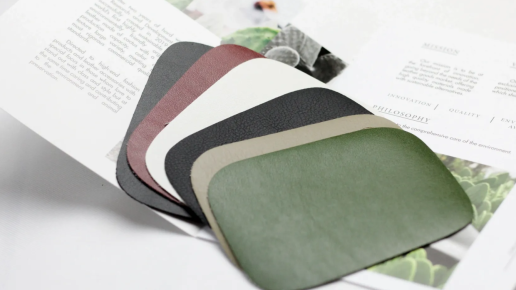
Picture credit: Desserto
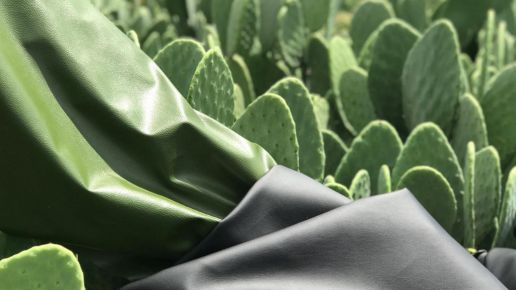
Picture credit: Desserto
Agraloop
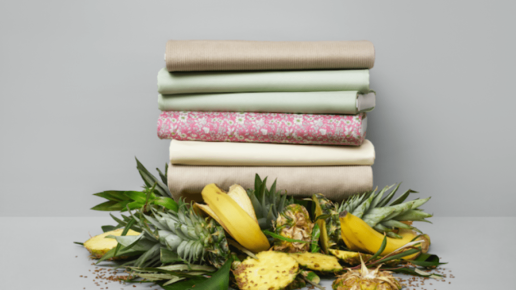
Picture credit: Agraloop
Agraloop has been busy transforming leftovers from food and medicine crops into scalable high-value natural fibre fashion products. The materials science company refines natural fibres from crops into a textile-grade fibre called Agraloop™ BioFibreTM.
“Our circular plus regenerative technologies provide systemic solutions for transforming waste into valuable fibre, yarn, and fabrics for the fashion industry,” states their website.
Mindfully sourced for circularity, Agraloop has developed a specialised wet processing technique; cellulose fibre from stems and leaves is purified into soft fibre bundles ready to spin into yarns. The Agraloop processes leftovers from various food and medicine crops, including oilseed hemp/flax, CBD hemp, banana, and pineapple.
Modern Meadow
Modern Meadow exists at the intersection of performance, scalable adoption and sustainability. The company began with an R&D initiative to develop a sustainable alternative to leather, which led to a breakthrough discovery of proteins as functional ingredients.
Harnessing the power of design, biology, and engineering, in 2017, Modern Meadow launched their prototype materials brand, ZOA. With the ability to impact a range of products across multiple industries, Modern Meadow state on their website: “Our experiments and exploration within ZOA led to the creation of Bio-Alloy™ and its application in a wide range of high-performing, low-waste bio fabricated materials, and our unique capabilities to create functional, animal-free proteins.”
Scaling by partnering with forward-thinking developers, manufacturers, and brands, Modern Meadow continues to educate industries on the possibilities of a biomaterial future.
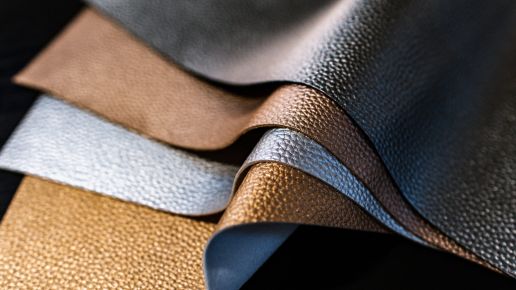
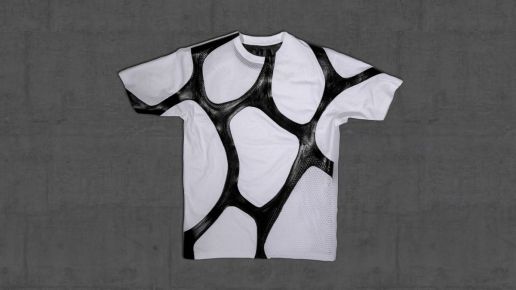
Picture credit:
Modern Meadow
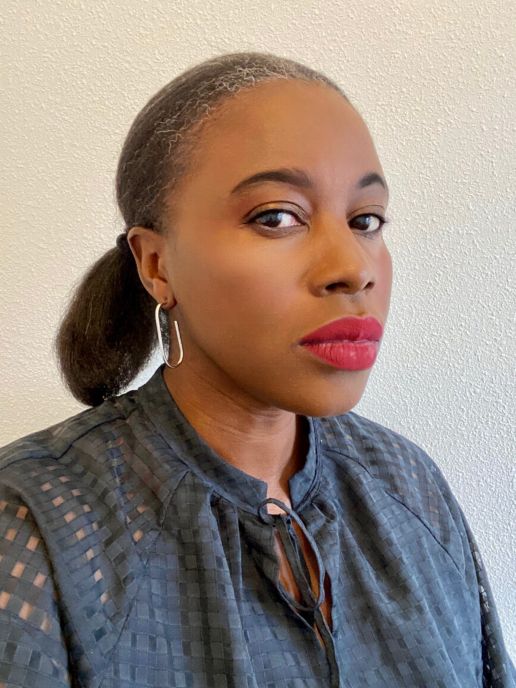
About the author
Founding editor-in-chief of FashNerd.com, Muchaneta has worked in the fashion industry for over 14 years. She is currently one of the leading influencers speaking and writing about the merger of fashion with technology and wearable technology.
Muchaneta ten Napel | editor@fashnerd.com
———————————————————————–
Discover further industry-disrupting innovations at our upcoming shows:
Recycling Textile Waste, Viable Solution or Short term plan?
With the rapid global increase in textile waste caused by the growth of the clothing and textile industry and fast fashion among consumers, textile recycling has become paramount.
The problem is that recycling textile is not an easy feat.
Many factors need to be considered. The most challenging obstacle to textile recycling is that the fabrics are often made from blended materials, and it is not easy to recycle mixed materials. This is mainly because each textile needs to be isolated before being effectively recycled. So as the fashion industry feels the pressure to move toward closed-loop production, what is the solution?
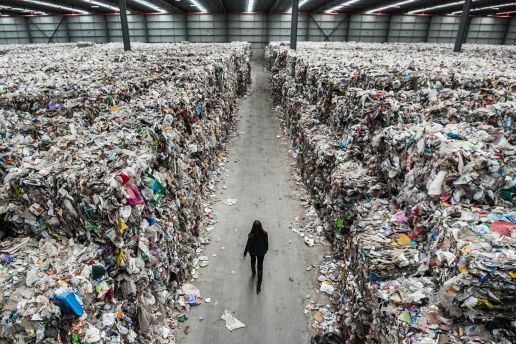
Picture credit: Rolling Stone
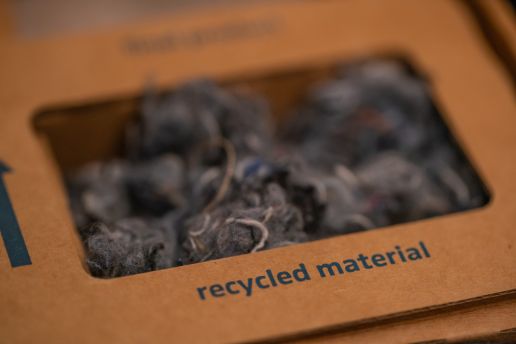
Picture credit: Pollima
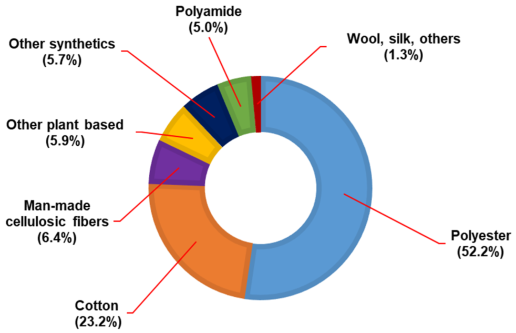
Picture credit: MDPI
Game-Changing Solutions Explained
Well, with various groundbreaking methods in the works, like the Hong Kong Research Institute of Textiles and Apparel (HKRITA), who came up with a solution that makes it possible to recycle blended material into new fabrics and yarns without any quality loss. They can do this thanks to a hydrothermal (chemical) process.
Working together with H&M Foundation, they successfully developed a process that can fully separate and recycle cotton and polyester blends. The recovered polyester material can be reused directly, creating new benefits of recycling without any quality loss. The hydrothermal process uses only heat, water and less than 5% biodegradable green chemical to self-separate cotton and polyester blends. This fibre-to-fibre recycling method is cost-effective, and there’s no secondary pollution to the environment, ensuring the life of the recycled material is prolonged sustainably. The technology will be licensed widely to provide broad market access and maximum impact.
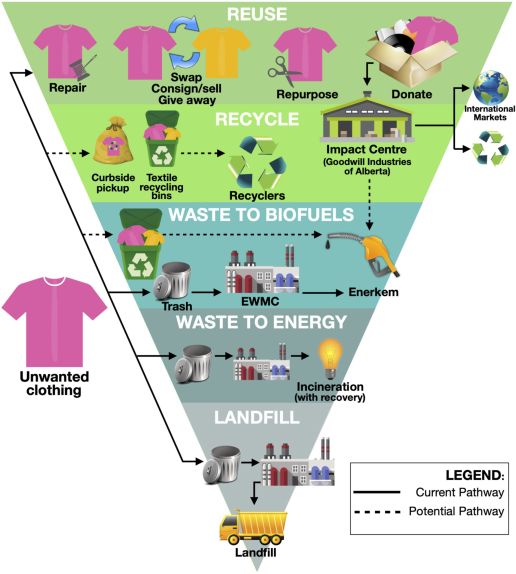
Picture credit: Sion Fraser University
Erik Bang, former Innovation Lead at H&M Foundation, shared:
“For too long, the fashion industry has not been able to recycle its products properly since there’s no commercially viable separation, sorting, and recycling technology available for the most popular materials such as cotton and polyester blends”. He continues, “This very encouraging finding has the potential to change that. We are very excited to develop this technology and scale it beyond the laboratory, which will benefit the global environment, people and communities.”
Then there is the Swedish company Södra. They have come up with a unique recycling solution that could influence how the fashion industry recycles its textiles.
Designed to enable large-scale textile recycling, the Södra, a significant forestry cooperative based in Växjö, Sweden, has come up with a unique solution that solves this fundamental obstacle to the textile industry. The pioneering solution makes it possible to recycle textiles on a large scale.
Using its resources and expertise for an innovative textile recycling solution, Södra has found a way to recycle fibres from blended fabrics on a large scale. They did this by enabling circular flows in the fashion and textile industry.
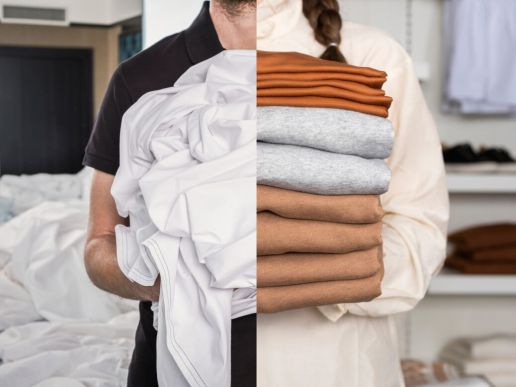
Picture credit: Södra
“Södra also has aggressive sustainability targets. We are, therefore, seeking companies with high sustainability ambitions that would like to partner with us in the delivery of textiles. That will determine our start-up and future production capacity” says Helena Claesson, Project Manager Södra.
Explaining the process further, Johannes Bogren, President of Södra Cell Bio-products, shared: “We are now redrawing the fashion and textile industry map by offering circular flows of textile fibres. A sweater can now become a sweater again. This will create added value for our customers, especially the fashion industry.”
The Fashion for Good Full Circle Textiles Project turned to innovative recycling technologies to close the loop on textile waste. The project’s objective was to explore the potential to reduce the environmental impact of textile waste; the textile-to-textile recycling solution has the potential to eliminate the industry’s dependence on virgin raw materials.
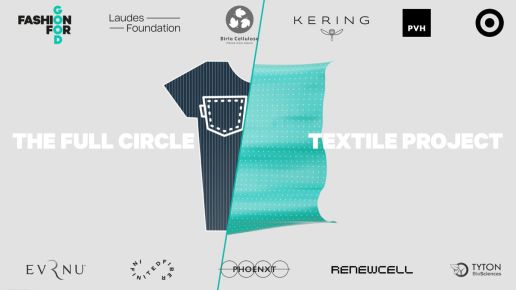
Picture credit: Fashion for Good
Supported by C&A, Martha Willis, Senior Manager of Sustainable Materials and Circular Innovation at C&A says: “This project will help us all in understanding the barriers, impacts and opportunities in the chemical recycling of polyester and is an important foundation to C&A’s commitment to connecting principles of circularity to 7 out of 10 of our products by 2028.”
Focusing on investigating economically viable and scalable solutions, the Full Circle Textiles Project has accomplished their objective scale of disruptive innovation in the industry and the capability of chemical recycling to accelerate circularity.
“The next phase of the project focuses on scaling these solutions and encourages brands, innovators, and supply chain partners to create long-term partnerships, catalyse funding to enable scaling, and leverage industry expertise to develop and implement these technologies further,” says Fashion For Good.
The C&A supported project, which was launched in September 2020, was successfully executed. Read the outcomes and learnings of the project here.
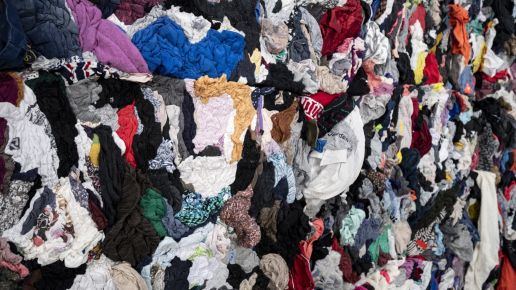
Picture credit: Nord News

Picture credit: Eco Rebels
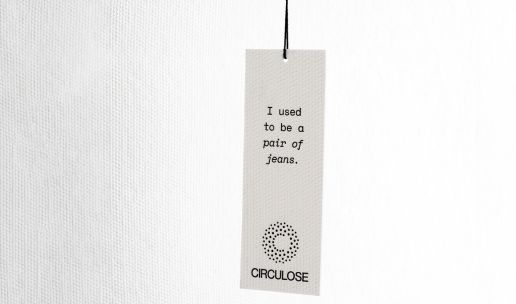
Picture credit: Nouryon
Conclusion
So is recycling textile waste a viable solution or short term plan?
I think that the aim should be to develop the infrastructure necessary to scale textile recycling, and to do this, fashion businesses need to take advantage of upcoming technological developments. By working together toward a common goal, we will get one step closer to a more sustainable textile recycling process, with the end goal of contributing to facilitating a circular economy.

About the author
Founding editor-in-chief of FashNerd.com, Muchaneta has worked in the fashion industry for over 14 years. She is currently one of the leading influencers speaking and writing about the merger of fashion with technology and wearable technology.
Muchaneta Kapfunde | editor@fashnerd.com
———————————————————————–
Discover further industry-disrupting innovations at our upcoming shows:
Sustainable Innovations #6: Wearable muscles by MotorSkins
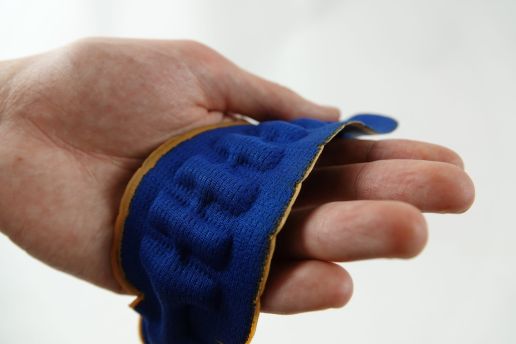
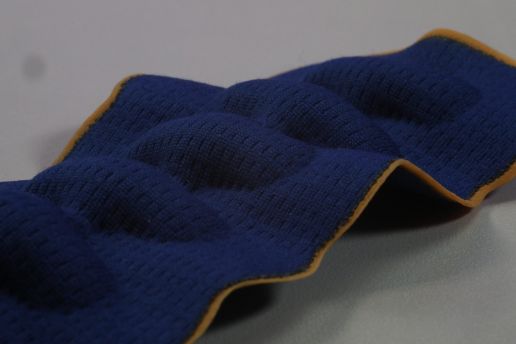
Innovative, intelligent, interactive: MotorSkins is a pioneering start-up in the field of shape-changing soft-robotic textiles. The Berlin-based company produces garments that help muscles move without any electronics such as batteries or motors – making them a pioneer in the industry. The first item produced is a compression garment for the legs.
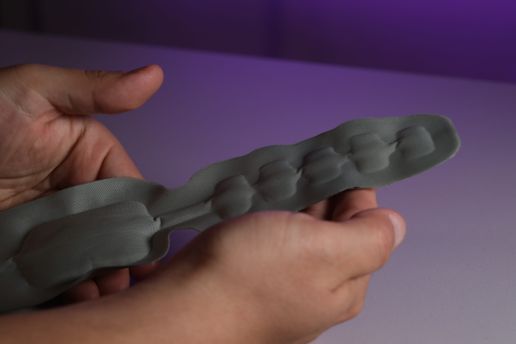
The special feature: the textiles are being stimulated by the movement of the users thanks to the new design and the innovative material. This creates a cycle: when the foot of the user compresses one part of the circuit against the floor (during a step), the pressure and volume are transferred to the active part, which powers it.
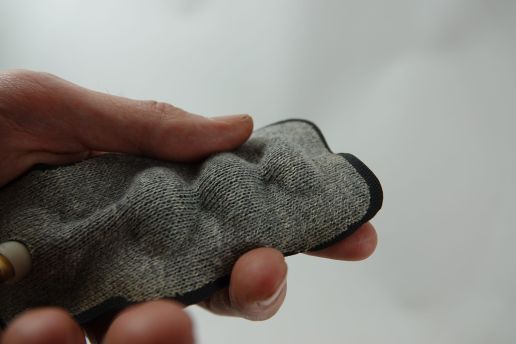
As an interface between sport, wellness and health, the start-up creates products that can be used medically, for relaxation or to support movement, depending on requirements. Currently, the young, international team at MotorSkins is working on textiles that are attached to the joints to make running easier – either for normal movements or also for illnesses. Inspired by nature, made for people.
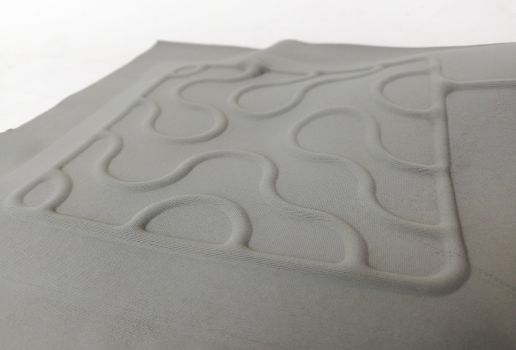
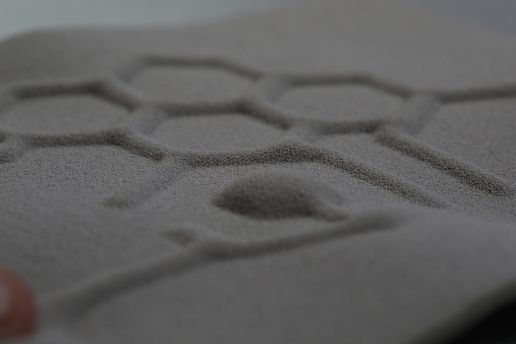
“MotorSkins technology bridges the functionality of soft-robotics with the versatility of textiles. We are a development platform for applications that explore human-machine interaction. Our technology creates a new paradigm of innovation in materials and sustainability where smart active elements are made without integrating electronics or batteries.”
– Juan Opitz-Silva
Follow on
For more information about SUSTAINABLE INNOVATIONS, see this interview with Simon Angel, curator of the Sustainable Innovations Forum, and the following articles:
“Pre-Action”: An interview with Simon Angel, curator of the Sustainable Innovations forum >>
“Biotic” by studio Lionne van Deursen >>
Flower matter by Irene Purasachit >>
Offcuts collection by Seok Park >>
Sunkolor by Panorama Fabrics >>
Sustainable Innovations #4: "Sunkolor" by Panorama Fabrics
With climate change still gathering momentum, the intensity of the sun’s invisible UV rays is also increasing. The problem: the intensity is not visible to the eye. The result: sunburn and damage to our skin that sometimes only appears years later which makes it all the more important to protect our important organ.
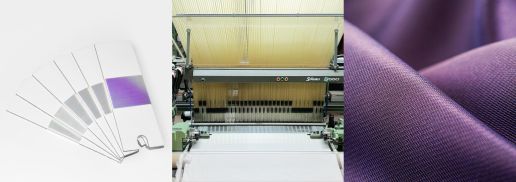
Exactly this is possible with Sunkolor. The material helps to visually perceive sun exposure and to establish a healthy relationship with it as a result. The technology Panorama Fabrics, the material driven Design Studio from Berlin, manages to make UV rays visible. For this purpose, Sunkolor yarns, which are produced in Germany, are woven into textiles.
When exposed to sunlight, the colour of the material changes thus indicating the dangerous UV index range. The change of colour makes it immediately clear once the situation becomes critical. In the first step, the yarns will be attached in labels to hiking backpacks. In the long term, a variety of different or outdoor garments will be made from this yarn.
The vision:
Create new tools to adapt in a changing environment caused by climate change.
Panorama Fabrics studio aims to contribute with its own products and pioneering designs to highlight the possible interaction between textiles, humans and our climate. Research is being carried out on innovations to make more people aware of the effects of climate change and at the same time support them in dealing with it. The two founders, Gabriela Kapfer and Karina Wirth, share a fascination for different materials and a passion for interdisciplinary collaboration, which enables them to create something new and progressive together.
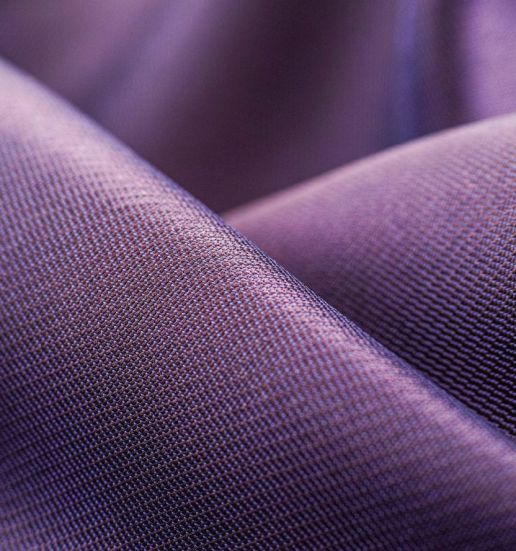
“Sunkolor makes the invisible visible to create awareness.”
– Gabriela Kapfer & Karina Wirth
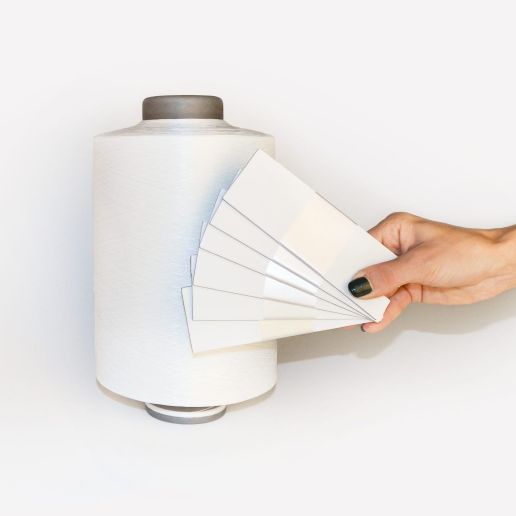
Please find more info about SUSTAINABLE INNOVATIONS in this interview with Simon Angel, curator of the Sustainable Innovations Forum and in the articles about further projects:
Interview about Pre-Creation, -Action and -Connection in our industry >>
Offcuts collection by Studio Popopo >>
Textile Inventions You Need To Be Acquainted With In 2022
Textile Inventions You Need To Be Acquainted With In 2022
(If You Are Not Already)
AN INDUSTRY INSIGHT BY FASHNERD FOUNDER MUCHANETA KAPFUNDE.
The race to digitise the textile sector is expected to continue to gain momentum throughout 2022. However, with sustainability still a key theme, the good news is that game-changing innovations are helping a very traditional industry recognise business opportunities that push towards a fundamental shift in industry practices and any future developments.
Reimagining the Textiles System With a New Mindset
No longer held back by conventional processes, more and more textile manufacturers, suppliers, buyers, and designers are now transitioning towards a textile system that allows them to harness better economic, societal, and environmental outcomes. In addition, prioritising the application of new technologies has helped the textile industry take those first steps of progress towards adopting new business models, technological innovation, and radical collaboration.
“Our success depends not only on the work within our own value chain but on disruptive partnerships across a broader textile production and manufacturing ecosystem,” stated Cyrus Wadia, VP Sustainable Business and Innovation at Nike, in the Ellen MacArthur Foundation report “A New Textiles Economy: Redesigning Fashion’s Future”.
As technology continues to have a significant impact on the textile industry, in 2022, make sure you keep an eye on the following innovations from these three game-changing companies:
1. Kelp – One Of The Most Renewable Natural Resources: Algiknit
In the business to make textile production more environmentally conscious, Algiknit offers material options that perform as well as conventional materials.
“The yarn we’re producing today has the look and feel of the natural fibres consumers are familiar with, plus all the makings of a no-compromise conscious material,” said Aaron Nesser, co-founder and CTO of AlgiKnit, in a statement.
Staying ahead of the curve in fabric innovations, Algiknit could effectively bring kelp-based yarn into the mainstream. The startup is currently poised to scale the production of eco-conscious yarns for use by forward-thinking global fashion brands.
With Kelp considered one of the most renewable natural resources globally, the Brooklyn-based material-maker of carbon-neutral, toxic-free textiles has spent the past four years developing technology to produce yarns on a commercial scale. They hope that they will be able to scale production to a point where they will be able to meet growing material demand in time.
2. Freshwater-free Textile Fibres, The Next Alternative: SaltyCo
UK startup, SaltyCO, has come up with freshwater-free textile fibres. Hoping to establish an alternative to freshwater-intensive cotton cultivation, SaltyCO is on a mission to tackle the side effect of wasteful freshwater use by rethinking the system and installing a new category in sustainable textile production.
Acknowledging that there is no single solution to “sustainability”, SaltyCO’s vision is to build a planet-healing supply chain that begins with an approach to regenerative agriculture. Hoping to create the most impact by sourcing their plant material, the materials science company has so far found a suitable salt-tolerant plant for the textile supply chain. They are now researching regenerative cultivation techniques and textile products. The outcome has been BioPuff, a plant-based fibre fill produced in SaltyCO’s laboratory in Scotland.
An alternative to animal and petroleum-based products, BioPuff is made of pure cellulose and has been reported to reduce petroleum by 70% in every jacket impact and save up to 25 litres of fresh drinking water.
3. Built with Biology, Not Oil: Biofabricate
Do you know that we are at the dawn of a new age where we can biodesign and biofabricate? No longer confined to small-scale experiments, biomaterials have garnered interest from well-known brands, like Adidas and Hermès, looking for plant-based alternatives to petroleum.
Recognising the potential of ‘Living Factories’ like Mycelium, Bacteria, Yeast and Algae, is Biofabricate. They are a startup that believes that a sustainable material world is built with biology, not oil. Recognising that there are no shortcuts, Suzanne Lee, founder and CEO of Biofabricate, believes that patience and tenacity by the industry should be a requirement.
“This can be a struggle for many designers – who like fast outcomes. But unfortunately, biology doesn’t work like that”, explained Lee when interviewed by Nextnature.net.
As a new generation of biofabrication and cell agriculture startups continue to set the standard, Biofabricate has become the go-to for those looking to bridge design with biotech intelligently.
In the current landscape, textile inventions are setting the standard by driving the textile industry to understand the facts and participate in the solutions. But, in the end, material innovation is a constant journey, one you should already be on if you aren’t already.
Are you interested in more indepth facts and figures of the new textile economy?
Check out FashNerd.com to follow the journey of the industry or read one of the following blog articles:
Antimicrobial Textiles, Hero or Hype?
The New Textiles Economy, A Catalyst For Transformation?
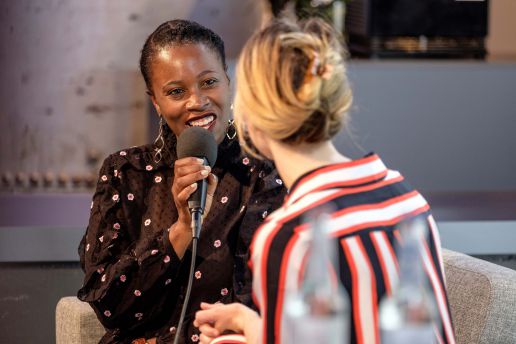
ABOUT THE AUTHOR
Founding editor-in-chief of FashNerd.com, Muchaneta has worked in the fashion industry for over 14 years. She is currently one of the leading influencers speaking and writing about the merger of fashion with technology and wearable technology.
Muchaneta Kapfunde | editor@fashnerd.com
KEYHOUSE's CLO Virtual Fashion stands for future vision and collaborative collection development
No MUNICH FABRIC START without our Innovation Hub KEYHOUSE! Although our shows unfortunately could not take place physically at the end of January, we would like to give our long term partners and exhibitors the chance to present their developments for Spring.Summer 23 online.
As a digital specialist from Munich, CLO Virtual Fashion stands for future vision and collaborative design development.
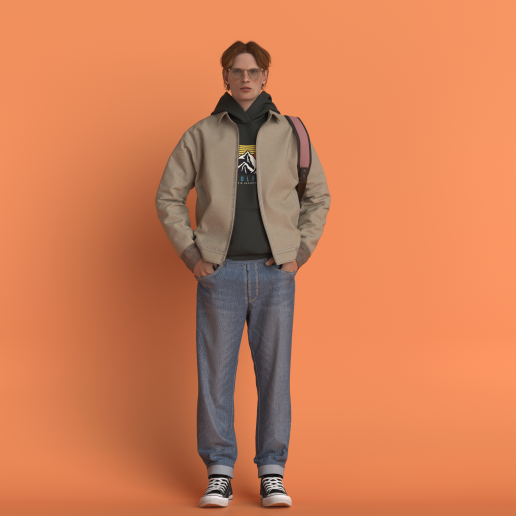
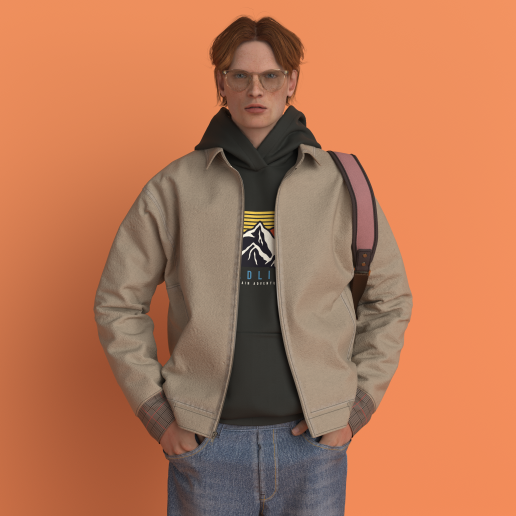
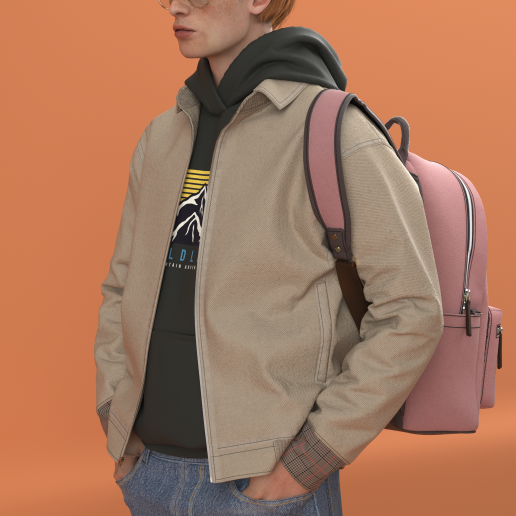
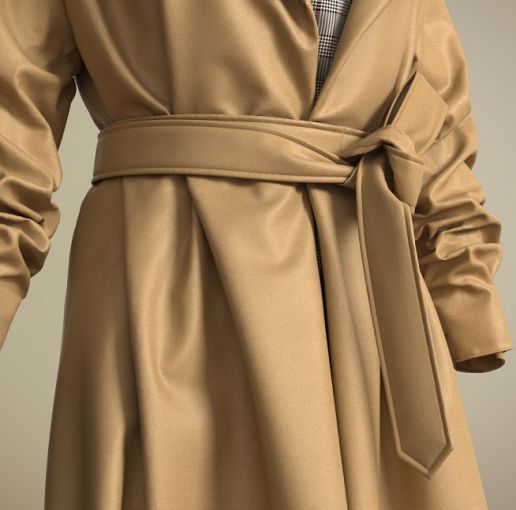
CLO Virtual Fashion is leading the market by digitally merging, consolidating, and converging all components related to digital garments. From 3D garment design software, digital asset management and collaborative design development platform, to consumer facing services such as virtual fitting on e-commerce, all of CLO’s products and services provide users the most efficient product development experience within the garment industry.
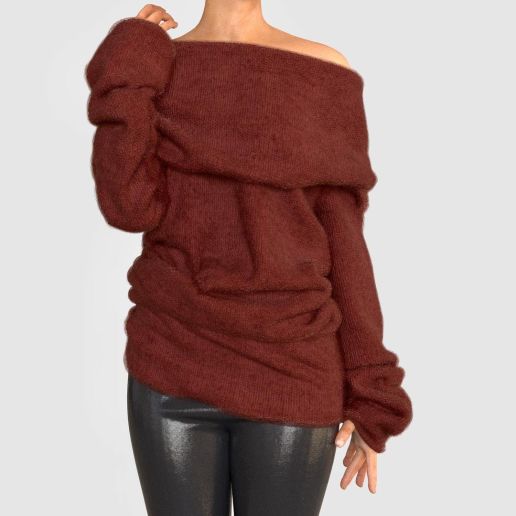
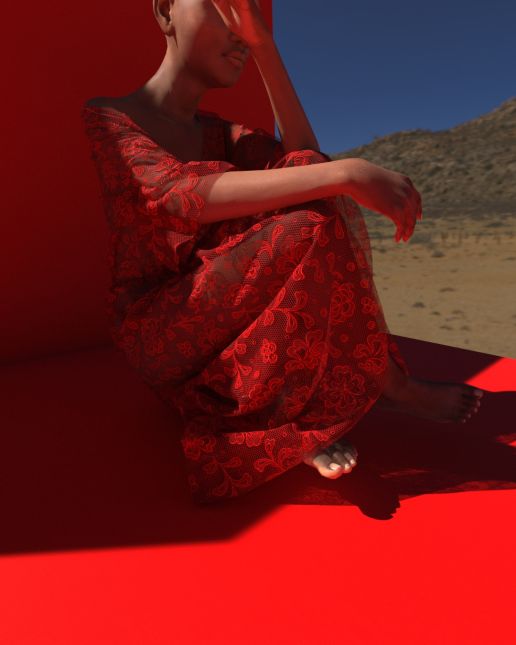

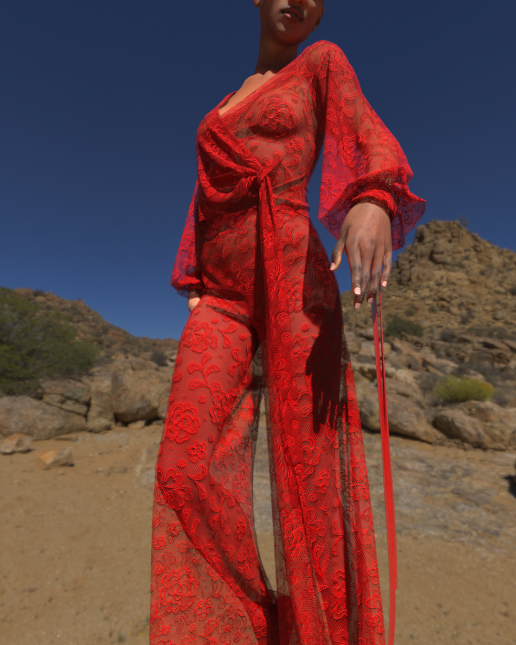
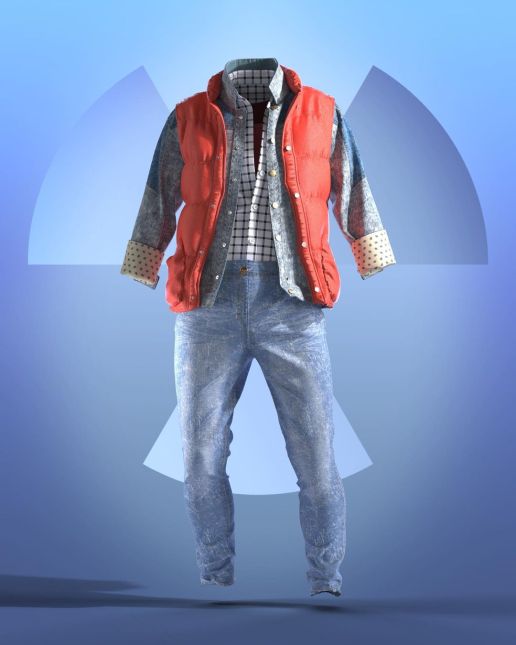
“Step beyond design.
Streamline your design development process with the power of true-to-life 3D garment simulation.
Show your creativity with CLO Virtual Fashion.”
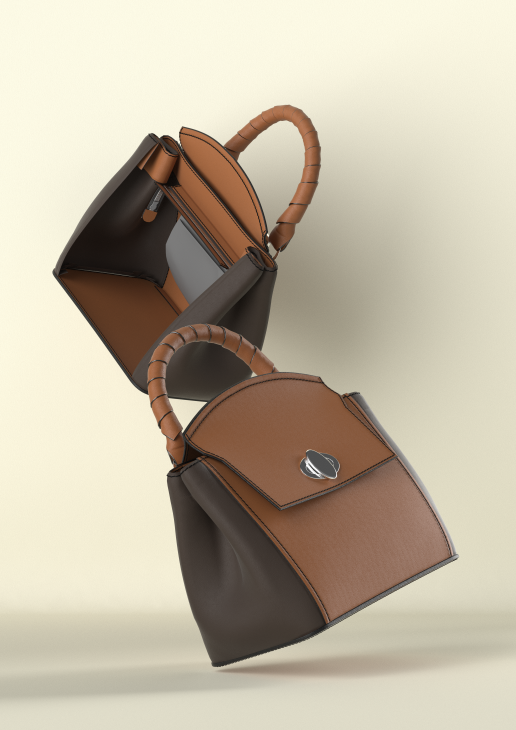
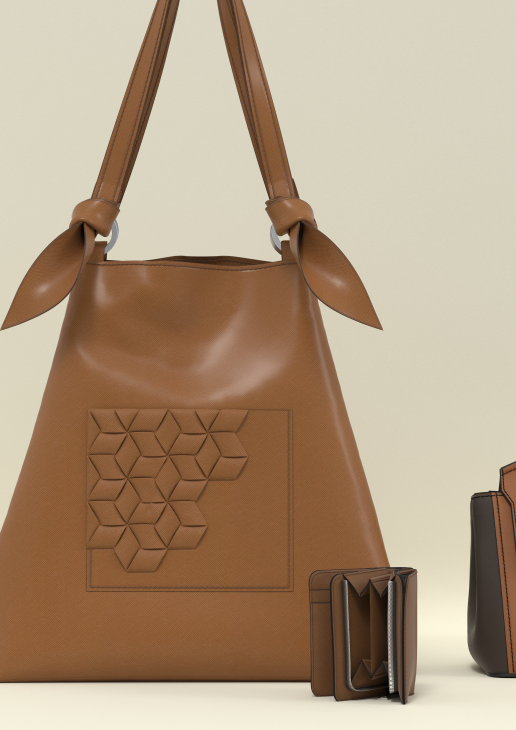
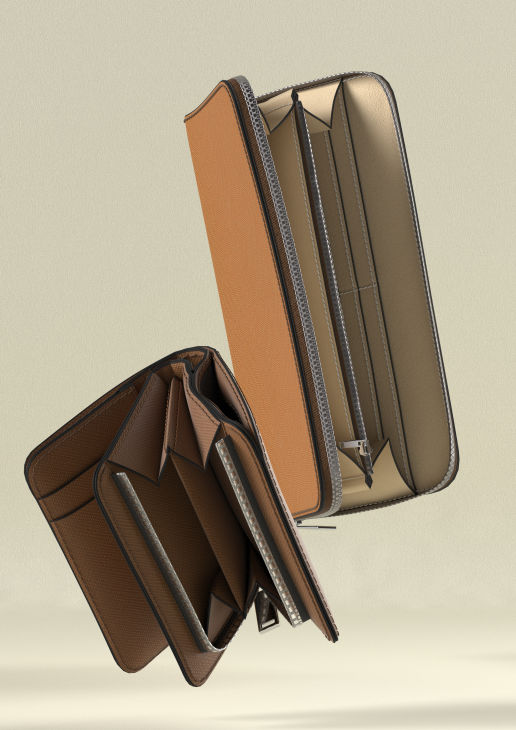
More information about CLO’s futuristic 3D Design Process can be found in this blog article:
Release of the new CLO version 6.0 >>
————————————————————————–
Experience further innovations and forward-looking developments at the first independent BLUEZONE X KEYHOUSE Show from 3 – 4 May 2022.
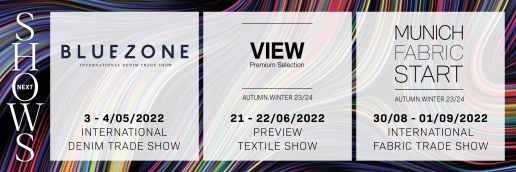
BLUEZONE X KEYHOUSE will welcome you in May
The last few weeks have been dominated by the finalisation of our upcoming shows. And we are very proud of the current, impressive status: Thanks to the enormous support from the industry, around 700 suppliers from 33 countries are registered for MUNICH FABRIC START, including more than 90 international denim suppliers for BLUEZONE.
At the same time, the very dynamic situation with the ever-increasing measures for events and the rapidly increasing infection numbers all around Europe make it difficult for us to take the next steps to be able to welcome you again in just a few weeks.
It is with a very heavy heart that we therefore feel obliged to cancel
MUNICH FABRIC START Spring.Summer 23 from 25th – 27th January 2022.
BLUEZONE can’t happen in January 2022 as well, but the good news is that we are going to realise a stand-alone denim and innovation concept from 3 – 4 May 2022 on the Zenith grounds in Munich:
BLUEZONE X KEYHOUSE
“As trade fair organisers, in addition to the major economic risk, we also have a high social responsibility. Decisive for this serious decision are various realistic scenarios that could occur in the coming weeks depending on the situation: a very short-term ban on events, further restrictions for events or additional travel restrictions. In addition, of course, the health and safety of all participants is always our top priority. Due to current developments, we unfortunately have no other option than to cancel MUNICH FABRIC START. At the same time, we see a great opportunity in being able to offer a physical platform for denim and innovations in Munich from 3 – 4 May 2022: BLUEZONE X KEYHOUSE. There, you will find an impressive new format in the style of a blue festival with currently over 90 exhibiting denim mills and innovators.”
Sebastian Klinder, Managing Director Munich Fabric Start

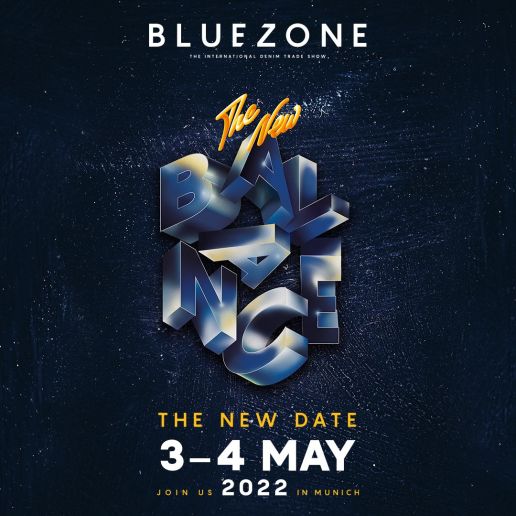
STAY TUNED: We look forward to telling you more about our BLUEZONE X KEYHOUSE concept soon & can’t wait to finally reunite the Blue Community in May again!
At the same time, we will of course keep you informed about news and the latest collections from our exhibitors via our M/UNIQUE blog and Social Media & you will soon be able to purchase our trend forecast for Spring.Summer 23.
Now we wish you a nice pre-Christmas season & above all: stay healthy!
Your MUNICH FABRIC START & BLUEZONE team
SAVE THE DATES - NEXT SHOWS

5 Tech Trends Reshaping Apparel Manufacturing
5 TECH TRENDS RESHAPING THE FUTURE OF APPAREL MANUFACTURING
AN INDUSTRY INSIGHT BY FASHNERD FOUNDER MUCHANETA KAPFUNDE.
Transforming textile manufacturing and reshaping how the industry does business, new technologies are not only being adopted; they are trending. With various innovations on offer, here are the top five tech trends that have proven popular in helping apparel manufacturers create greater efficiency and build better relationships between producers, suppliers and customers.
1. Digitisation
It seems that digitisation in manufacturing really could be the perfect match. Defined by Gartner as “the use of digital technologies to change a business model and provide new revenue and value-producing opportunities”, digitisation is shifting manufacturing towards becoming a digital business.
Changing how products are designed, created, utilised and sustained, the digitisation of manufacturing has proven, to transform the operations, processes, and energy footprint of factories and supply chains while increasing opportunities in efficiency, productivity and accuracy in the textile industry.
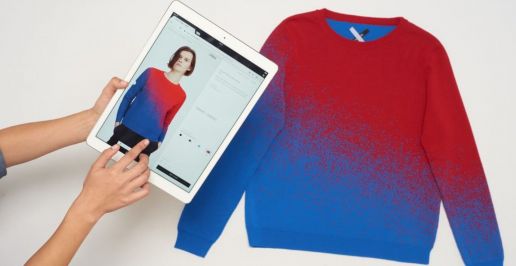
2. Fashion on Demand
Yes technology can finally support the need for fashion on demand. Technology is revolutionising what fashion on demand means. Once regarded as uneconomical, on demand fashion was once seen as impossible to achieve on a larger scale. The good news is that this is no longer the case since technology is now at a level that can support the rise of made-to-order and made-to-measure.
Therefore, fashion and textile businesses that want to create an on-demand supply chain can turn to new software, like the one provided by companies like Unmade, a London based startup that has worked with the likes of Christopher Raeburn and Avery Dennison. Offering convenience, fashion on-demand has also proven beneficial for fashion brands like New York-based Prabal Gurung, who have made the shift and now 25% of all their orders are now made-to-order.
Another great example is the knitwear company, Ministry of Supply. They have reportedly tested 3D printing knitted blazers and dresses and allowed their customers to choose different styles and colours. Within two days, the items were ‘printed’ and sent to customers. So again, innovation could mean that a fashion on-demand product could be delivered in the same amount of time as most fast-fashion labels, now that is progress.
3. Robotics
Want to implement robotics into your textile manufacturing process? Then read on. Groundbreaking advancements in recent years have allowed robotics in the textile industry to progress to the point where development has become highly advantageous for textile manufacturers. Ripe for transformation, robotics are becoming less of an obstacle and more of a technology that can positively transform the textile industry for the better.
As the automation wave continues to take over textile manufacturing, companies like Sewbo provide innovative solutions that support the automation of apparel manufacturing. Sewbo’s solution has been created to allow manufacturers to create higher-quality clothing at lower costs while shortening supply chains and lessening the long lead times that hamper the fashion and apparel industries. By helping to reduce the complexity of today’s intricate global supply network, the great thing about Sewbo’s technology is that it is suitable for a wide range of manufacturing applications.
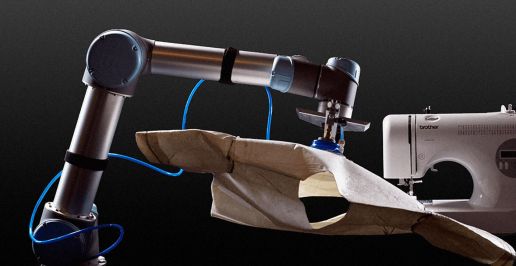
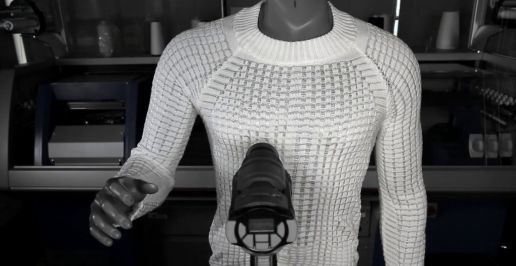

4. Machine Learning
A McKinsey report once stated that machine learning would reduce supply chain forecasting errors by 50% while also reducing lost sales by 65%. These numbers confirm that machine learning impacts textile manufacturing, especially in these three areas of business — operations, production, and post-production. Other great benefits of machine learning in manufacturing include improving product development, quality control, security and supply chain management.
Although some still argue that the technology is still in its infancy, those who have chosen to utilise machine learning fully have reduced their manufacturing costs and drastically improved product quality. Therefore, it is clear that using AI-powered systems in one’s manufacturing processes demonstrates that machine learning could bring numerous opportunities to enhance nearly every aspect of your business.

5. 3D Printing
Could 3D Printing be suitable for mass customisation? Well, some experts believe that 3D printing has the potential to help fashion and textile businesses who are looking to switch to an alternative customisable production method. Perhaps the biggest advantage of this type of tech tool is that it allows customisation choices to be implemented within the 3D file straight away before production.
If you are wondering whether there are any illustrative examples of fashion brands riding the mass customisation wave with 3D printing, the excellent news is that there is. Showing the way was the collaboration between Stratasys x Ganit Goldstein. Their partnership explored the melding of the traditional method with the latest 3D printing technology. “This is still a relatively new domain; we need to challenge ourselves to envision the next steps and to embrace this new design freedom to open up its true frontiers,” explained Naomi Kaempfer, Creative Director of Art, Design and Fashion at Stratasys.

ABOUT THE AUTHOR
Founding editor-in-chief of FashNerd.com, Muchaneta has worked in the fashion industry for over 14 years. She is currently one of the leading influencers speaking and writing about the merger of fashion with technology and wearable technology.
Muchaneta Kapfunde | editor@fashnerd.com
Antimicrobial Textiles, Hero or Hype
Antimicrobial Textiles, Hero or Hype?
AN INDUSTRY INSIGHT BY FASHNERD FOUNDER MUCHANETA KAPFUNDE.
In this new age of hypervigilance, a textile capable of effectively destroying viruses is currently a well sought-after unicorn. So much so that quite a few fashion brands have managed to create a buzz around antimicrobial textiles, materials infused with zinc and copper oxides of silver ions. Although antimicrobial materials cannot kill germs on contact, the ‘smart’ textile can effectively destroy viruses, which begs the question, can the fabric help with our current situation, Covid-19? Here are five takeaways about antimicrobial textiles.
1. The Rise of the ‘Sterilized’ Textile
Taking a broad-spectrum approach, antimicrobial fabrics were initially designed to prevent bacteria and fungi from growing. Traditionally reserved for particular uses in industries like healthcare, the increase in new antimicrobial fibre technologies has resulted in microbe-fighting agents being deemed safe enough for the fashion and apparel brands to add the technology to fabrics.
Taking a leap, a few fashion brands have started experimenting with sterilised textile marketed to the public as antimicrobial. With improvements still needing to be made, the Guide to Antimicrobial Fabric & Textiles by Apex Mills, explains that at the moment, the antimicrobial fabric merely slows down the spread of pathogens over time, not all of the textile is designed to kill spore cells on contact, supporting the theory that the innovation is not quite there yet.

2. Safe or Not So Safe
Are you skeptical of Antimicrobial textiles? That is not a bad thing because it wasn’t so long ago that it was suggested through studies, that silver nanoparticles, the most common ingredient in antimicrobial textiles, could form body issues that could potentially disrupt cellular processes or damage DNA.
Another concern that has been raised about antimicrobial textiles concerns recycling. It has been argued that when it comes to recycling, the innovative cloth could introduce uncertain chemical content that would threaten how the material is recycled. It is a valid concern that has raised many eyebrows among the more environmentally conscious designers.
So as brands like Burberry, who launched a line of antimicrobial masks in their signature check, race to appeal to anxious consumers, there must also be careful attention paid to asking the relevant questions about safety and the environment when it comes to the downside of antimicrobial fabrics.
3. Antimicrobial Textiles, Protection Not Guaranteed
Believed to protect and preserve with a ‘degree of effectiveness’, it is worth noting that not all antimicrobials are created equal. So how good is this super material?
Currently, there is no proof that antimicrobial technology will completely block viruses from surviving on textiles, rather just reduces the chances of transmission. Saskia Popescu, an infectious disease epidemiologist and assistant professor at George Mason University, told VOX: “There’s a lot of selling of products, based off fear, that really isn’t going to be effective.” A sound warning, so be aware of gimmicky textiles posing as super materials.
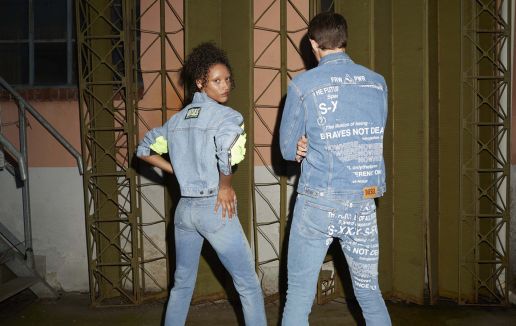
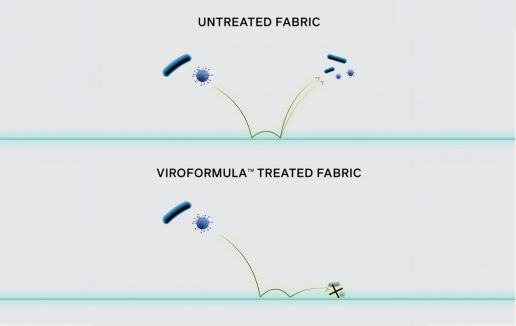
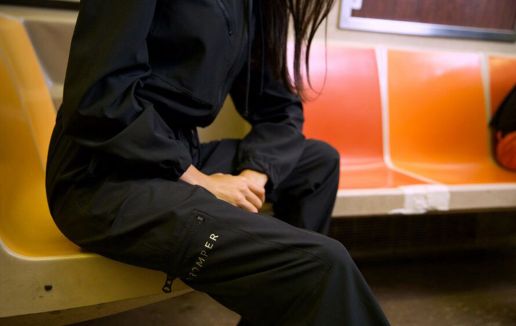
4. A Viable Gap in the Textile Market?
It should come as no surprise that the outbreak of the Covid-19 has resulted in an increase in R&D activities for antimicrobial textiles. Brands are already starting to introduce garments made of antimicrobial fabrics. A great example is the virus-fighting denim – a collaboration between Diesel and the Swedish chemicals company Polygiene. Using Viraloff technology, Polygiene’s treatment of the textiles reduces viruses by over 99 per cent on the material in two hours but the company advises users to “wash less and only when needed”.
Another new fabric launched in 2020 was Viroformula. Designed to “protect against viruses and bacteria” with cutting edge technology, the innovation was presented by the Albini Group, a material supplier for luxury brands like Tom Ford and Prada. Then there is BioRomper, an antimicrobial garment that blends fashion and function. The new super suit has been designed to eliminate cross-surface contamination during travel. The innovative romper is made of high-quality recycled materials that are sleek, stretchy with an antimicrobial finish.

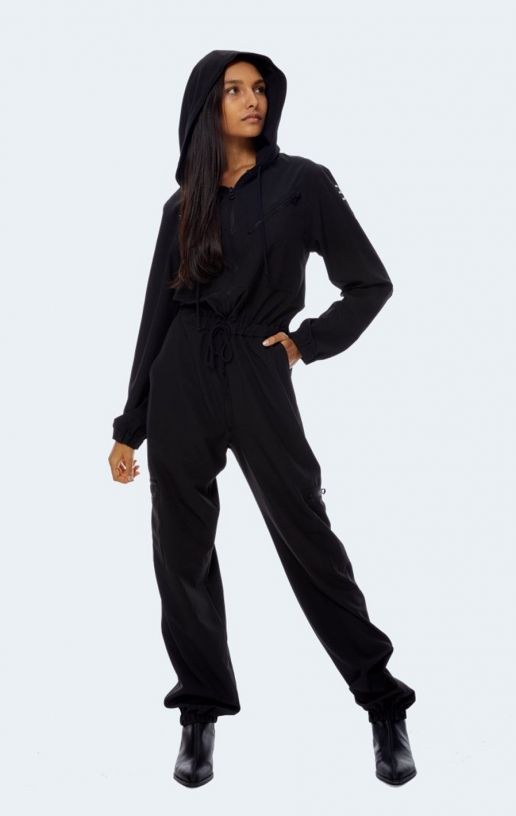
5. Can Antimicrobial Textiles Be Part of a Covid-19 Fighting Arsenal?
While there are some studies which suggest that antimicrobial textiles cannot effectively fight against viruses, HeiQ, a textile innovator who has been adding functionalities to fabrics since 2005, disagrees. Recently, HeiQ launched a mask made out of a material featuring copper technology that could deactivate the Covid-19 virus “in 5 minutes”, containing an ultra-thin pure copper coating applied via a high-tech vapour deposition process called HeiQ MetalliX. It converts a tiny amount of copper into vapour, allowing it to be deposited evenly to surround each fibre.
“Antiviral fabrics reduce the risk of virus transmission through surface contamination and are added protection from the virus.” Adding: “HeiQ does not want to make health claims and give people a wrong sense of security. Antiviral fabric is one factor in keeping people safe, but it needs to go hand in hand with other measures, such as keeping a social distance, wearing face masks when in crowded areas and washing hands regularly.” – Rahel Kägi Romero, Marketing Manager, HeiQ.
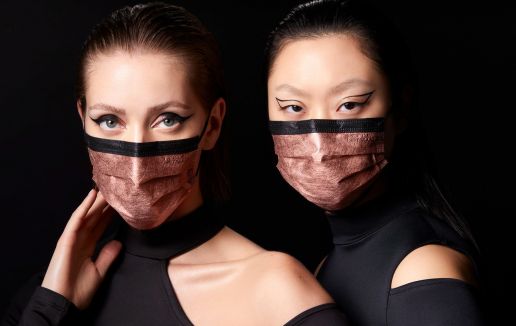
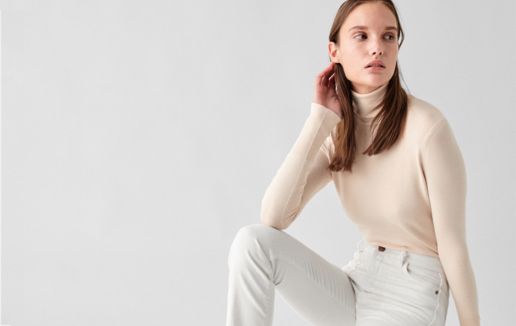
Believing in HeiQ’s material achievements is Warp + Weft. The brand, built on sustainability, partnered up with HeiQ to add the Swiss company’s antimicrobial textile technology to its fabrics. The self-sanitizing and germ-resistant surface were added to the softener during the laundering process of denim production. Even though this was an exciting partnership that showed how far antimicrobial materials have come, Sarah Ahmed, chief executive officer of Warp + Weft, told WWD that due to legalities and red tape, they could not legally guarantee that the fabric will protect against Covid-19.
If you are still unsure whether antimicrobial textiles are hero or hype, but you still want to try the innovation out, I advise you to first make sure you hop and skip past the gimmicky version of these textiles. Secondly, find out which antimicrobial agent the manufacturer uses. Lastly, keep your selection narrow, so you can test the market before rolling out your tech-infused textile product.

ABOUT THE AUTHOR
Founding editor-in-chief of FashNerd.com, Muchaneta has worked in the fashion industry for over 14 years. She is currently one of the leading influencers speaking and writing about the merger of fashion with technology and wearable technology.
Muchaneta Kapfunde | editor@fashnerd.com



